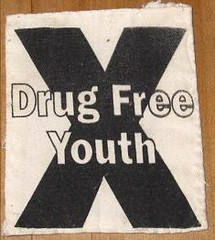Measurement of progesterone and estrogen level is commonly made possible by Radio Immuno Assay (RIA) and Enzyme Linked Immunosorbent Assay (ELISA).
Progesterone Level Determination
Progesterone is very significant in every woman throughout their menstrual cycle. Measurements of progesterone are primarily done to determine whether a woman has already ovulated and also to monitor induced ovulation. During pregnancy, progesterone is measured along with hCG to help in the diagnosis of an ectopic or failing pregnancy. Ectopic pregnancy shows a decreased level in progesterone. In cases of high risk pregnancy, progesterone is oftenly measured. It may also help in assessing the fetal health.
Serum progesterone
From the name itself, it is the measurement of progesterone in the blood.
The progesterone test is a simple blood test that is commonly performed in most fertility clinics. A large number of women undergoing fertility treatment will receive the progesterone test, along with the FSH test, the estradiol test, and the LH test. A small blood sample is taken and then sent to a laboratory for testing.
The Results of the Progesterone Test
Depending upon where you are in your cycle, your progesterone levels will be different. Progesterone levels surge just before ovulation and, if you become pregnant, they will continue to rise. If you do not get pregnant, your progesterone levels will decline. Normal levels for Days 1 to 6 are less than 100 ng/dL. Normal levels between days 7 and 14 are 20-150 ng/dL. Normal levels for days 15-28 are 250-2,800 ng/dL. cycles.
Estrogen level determination
Estrogen is one of the hormones secreted by the ovary. There are three classifications of estrogens. Estradiol, Estriol and Estrone.
ESTRADIOL is the primary estrogen.
What is the Estradiol Test?
The estradiol test is a diagnostic procedure used to measure the levels of estradiol in your blood stream. It is performed in conjuction with the Day 3 FSH test. A simple blood test, the estradiol test is performed in order to determine a woman's ovarian reserve. It is also performed in order to confirm a woman's FSH test
Performed on Day 3 of your menstrual cycle, the estradiol test is one of the most common fertility testing procedures. Most women undergoing fertility treatments will receive the estradiol test. Women have particular levels of estradiol during different stages of their menstrual cycle. By analyzing these levels on Day 3, your reproductive endocrinologist can determine your ovarian reserve. The amount of estradiol in your blood on Day 3 can also indicate whether or not your FSH test was accurate or not.
Estradiol and Infertility
High estradiol levels can have an impact on your infertility. Elevated levels of estradiol tend to indicate a problem with ovarian reserve. In high amounts, estradiol can suppress the amount of FSH in your system. This can cause your Day 3 FSH test to be inaccurate. In many cases, a high estradiol level indicates a complication with FSH and ovarian reserve. This can lead to:
lower pregnancy rates
poor ovulation
poor response to ovulation-inducing fertility drugs
poorer success rate with IVF
Who Can Benefit from the Estradiol Test?
All women undergoing fertility treatment can benefit from the estradiol test. Because it is secreted by your ovarian follicles, the amount of estradiol can indicate how far along you are in your follicular cycle. However, certain women are more likely to be offered the estradiol test, including:
women over the age of 35
women with unexplained infertility
women with a normal Day 3 FSH test result
The Estradiol Test Procedure
The estradiol test procedure is extremely safe and straightforward. On Day 1 of your menstrual cycle, contact your fertility clinic and make an appointment to have the test. On Day 3 of your cycle, you will have your blood drawn from your arm. This blood sample will be sent to your clinic's laboratory for testing. Results should be available within a few days.
The Results
Normal Day 3 estradiol levels tend to be around 80 pg/mL or lower. If your estradiol levels are higher than this, than this could indicate a problem with your ovulation. You may be further into your follicular phase than you should be, or your estradiol may be masking a problem with your FSH levels.
After the Estradiol Test
Your reproductive endocrinologist will discuss your test results with you. She will also suggest any further treatments that may be helpful in achieving pregnancy. These could include the use of birth control pills or other hormonal medications.
 This issue has been going on for a while now and it’s time to make a stand. Though the intentions are indeed good, drug test is a proposal that cannot be rushed. Both parties must reach a consensus first. It should be conducted with the help of the local government without making exceptions. And most of all, the welfare of the students must be the priority. After all, they are the future of this generation.
This issue has been going on for a while now and it’s time to make a stand. Though the intentions are indeed good, drug test is a proposal that cannot be rushed. Both parties must reach a consensus first. It should be conducted with the help of the local government without making exceptions. And most of all, the welfare of the students must be the priority. After all, they are the future of this generation.





